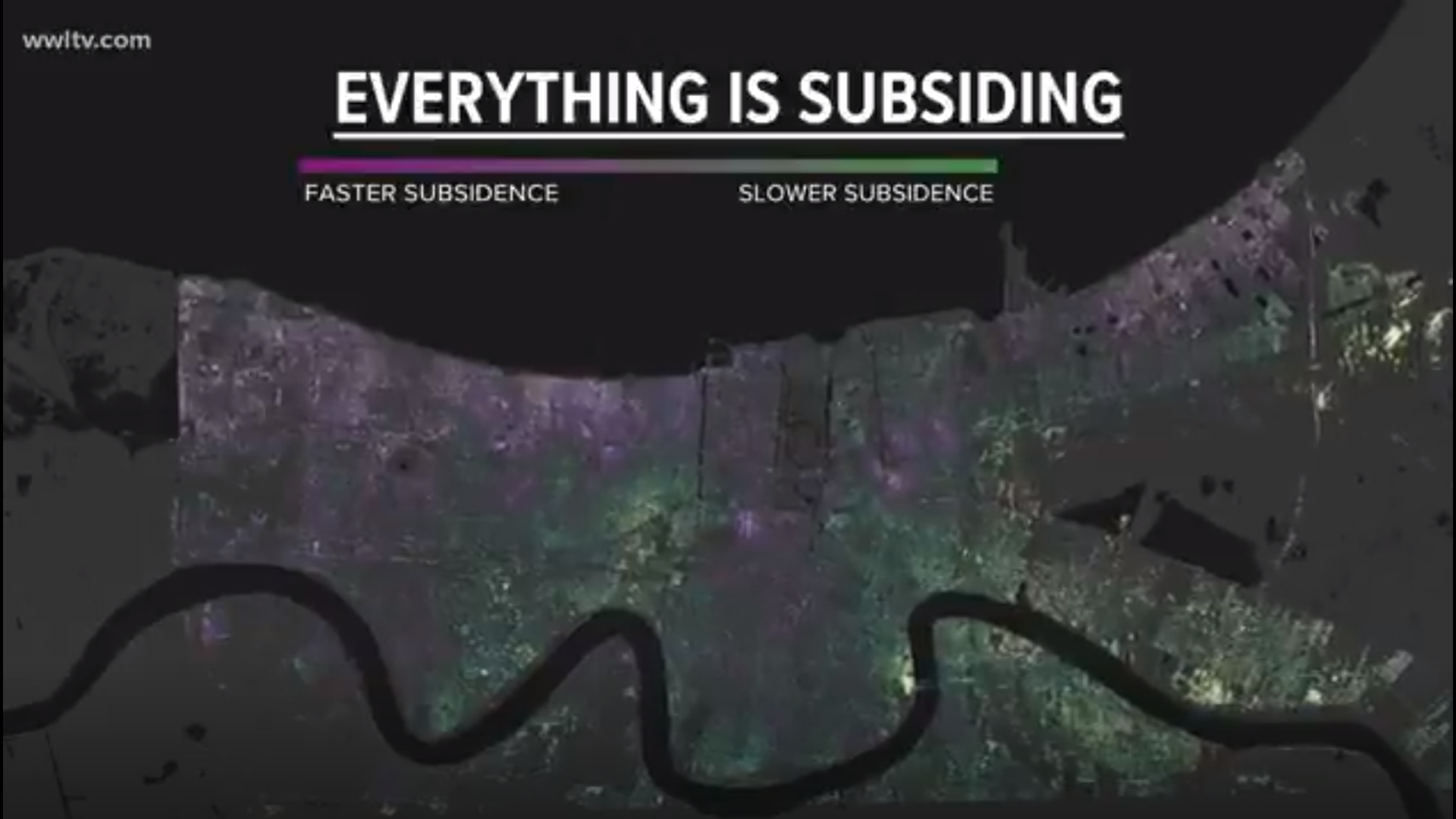NEW ORLEANS — In New Orleans, residents just wrapped up the first hurricane season where the Army Corps of Engineers could not guarantee the level of risk reduction it promised in 2007.
This despite the fact that the Corps just completed an 11-year, $14.6 billion project to repair and restore regional flood protection following Hurricane Katrina.
Of primary concern are the earthen levees. They form the backbone of the 350-mile maze of protection that includes concrete floodwalls, pump stations and gated structures.
Sea-level rise and Southeast Louisiana's soft, subsiding soils have caused earthen levees to sink faster than expected.
The fear is soon the levee system won't be able to protect against a 100-year storm, which it is now designed to do.
The Corps of Engineers has released a draft study showing the need to spend $3.2 billion to raise the level of the levees on both sides of the Mississippi River over the next 50 years.
The east bank improvements would include 50 miles of levee lifts and 19 miles of floodwall modifications and replacements.
Several miles of levees and floodwalls along the Mississippi River in St. Bernard Parish would also be elevated.
The west bank improvements consist of 66 miles of levee lifts and about a mile of floodwall improvements.
State and local governments would have to pick up 35-percent of the cost of construction.
The corps is now in the process of collecting public comments on the plan.
The reports and supporting information are available online at the U.S. Army Corps of Engineers, New Orleans District website:
For information on the east bank, click here.
For information on the west bank, click here.
► Get breaking news from your neighborhood delivered directly to you by downloading the new FREE WWL-TV News app now in the IOS App Store or Google Play.

